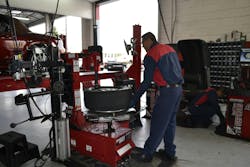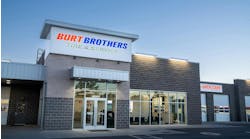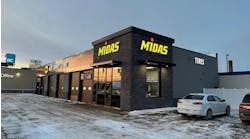Moving into the new year, it's likely that you paused to evaluate the balance you have in your life. Balance is important — not only in our personal lives, but in our businesses, as well.
Unless companies can balance customer expectations and business needs, they are likely to either disappoint customers or create unnecessary business losses. With more demanding customers and more power in the customer’s hands than ever before, delivering exceptional levels of customer service is absolutely essential.
How can you balance customers’ expectations and your business needs so you create the loyalty that drives repeat business, brand advocacy and ultimately, loyalty? Well, in short, it's all about promises.
Promises make the investor, your customer, perceive they have a role and some control over what's about to happen when they bring their vehicle to your shop. Think about this for a second. Vehicles are one of the most crucial resources we have in our lives. Handing a vehicle over to a crew that your customers largely don't know at all is a big risk.
Moreover, it’s personal and emotional for your customers. As with most everything near and dear to us, we like to be able to have influence. The least you can do is make them feel like they have some control over what's about to happen. Do that and deliver on those promises and you're one step closer to loyalty.
Promises also lend an emotional urgency to accomplishing a goal. While your customer's experience is emotional, both from a cash and time investment standpoint, the same isn't always true for your team that turns cars out day in and day out. When you put your word on what you’re going to do, you break through your customer's emotional stress.
This is especially true if you gave the customer the perception of control in advance. You've now essentially deflated the stress that we all know most of our customers carry with them when they walk in the door.
As a side note, it’s super helpful if your team members greet your customers, both on the phone and in person, with a goal of reducing their stress, whenever and wherever possible.
Additionally, promises are two-way contracts that seal the deal. If your customers can focus on other things — which they should be able to do while their second largest investment is in your care — you've created a healthier environment. It's not only healthier for your customers, but healthier for your team members, as well. No calls to check in and no asking, “Well, what about this or that?” All you need are keys handed across the counter and a verbal handshake pronouncing your value and the customer's validation of that value.
Think about those customers who are good communicators. They’re not only specific about what they want done, but when they need their vehicle back by. They clarify the contract for their own benefit. We love these customers because they’ve outlined the contract and removed gray areas. Why not turn every customer into a favorite customer by being an equally good communicator?
So how can you deliver promises? First you should look at how your brand promise is being communicated, if at all. A good example would be your value package. An scenario could be, “While I look these tires up for you, let me tell you about the advantage we provide. All tire purchases include free rotations, free air checks, free alignment and brake checks, as well as our low-price guarantee.” You’ve essentially just made a brand promise and have communicated it well. Get the sale and you’re already a few steps ahead of the competition.
How about urgency? Well, every customer has a time frame in mind, along with a laundry list of other expectations when they arrive. What if you asked every customer, “What time do you need your car back?” If it works within your schedule and their schedule, you’ve just made a “promise time” with your customer. Those times then should be communicated loud and clear on the work order/digital vehicle inspection and verbally communicated with your service manager.
Finally, establish that two-way contract. Here’s an example: “Ms. Jones, while you're in today, we’ll give your car a good look over to help you plan for upcoming repairs. We’ll check under the hood, under the car behind the wheels, etc., and will let you know if there’s anything that needs your attention. Sound good?”
You can easily train your teams to insert these three examples in almost every conversation they have with customers. They’re game-changers.
Customers become loyal when they trust the promise your business makes and see that promise materialize in your products and services. Over time, this trust must not only be constantly delivered but reinforced to keep customers loyal. Fall short on either end and you're either sacrificing customers or sacrificing profits. Why not have both? Manage your customers’ expectations with excellent communication and I promise you can have both.




